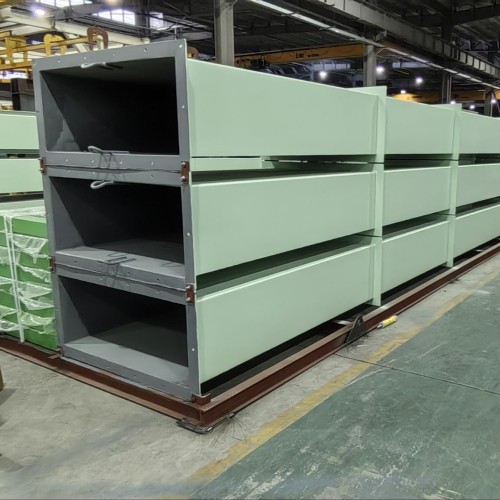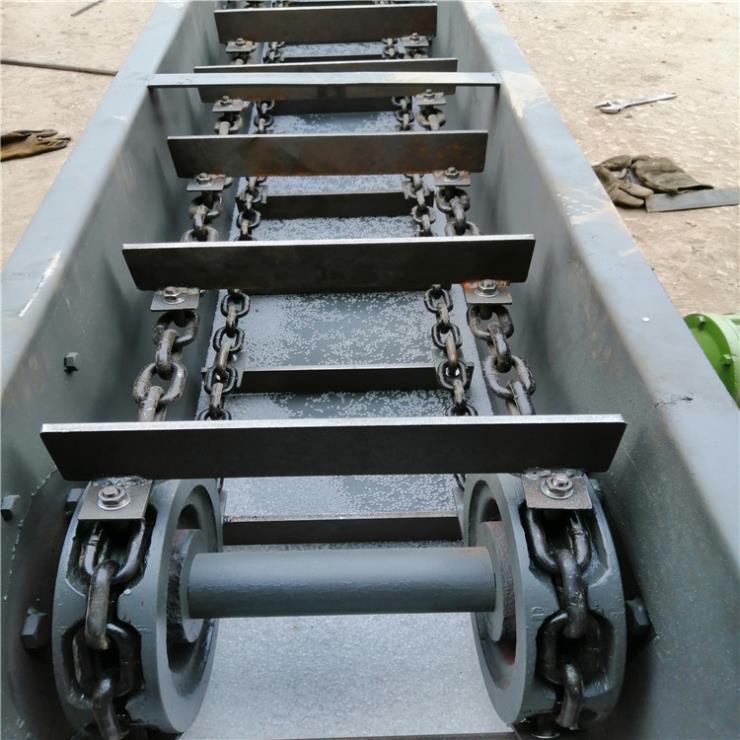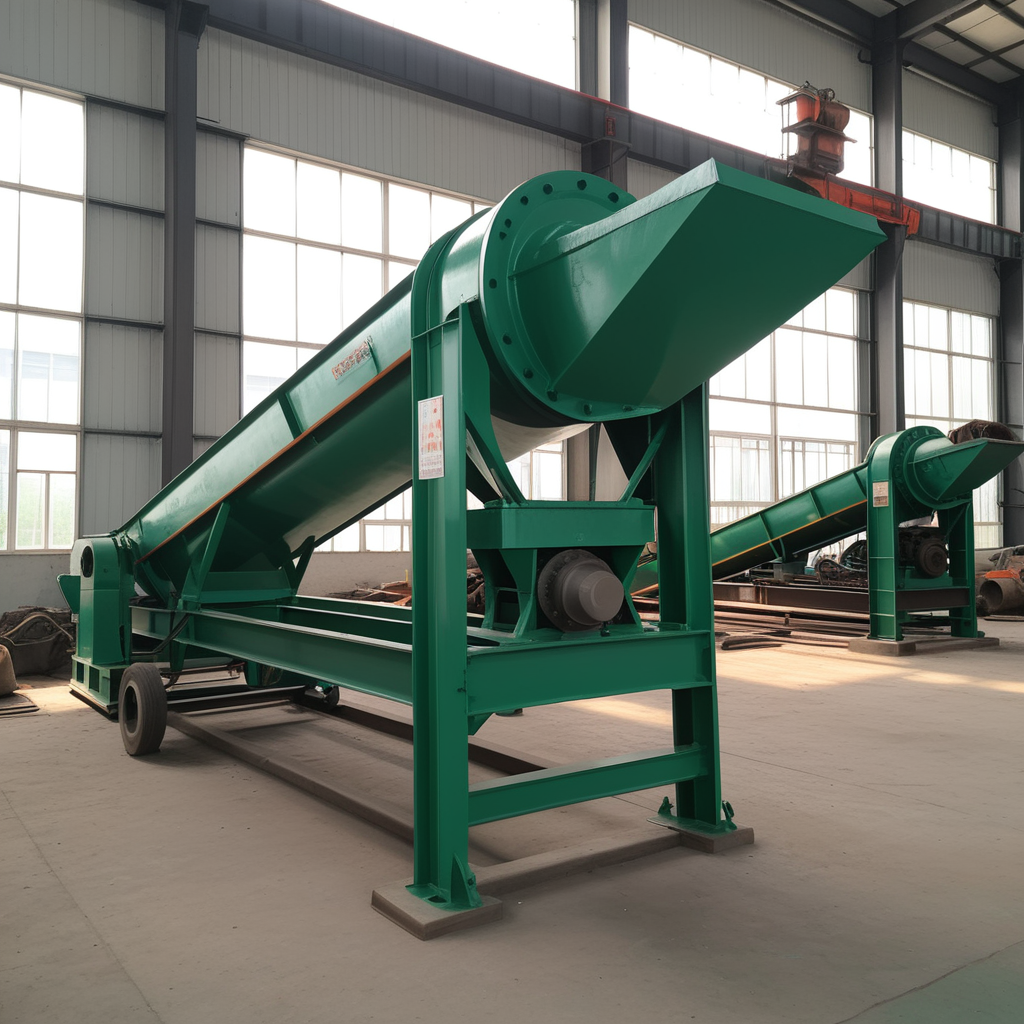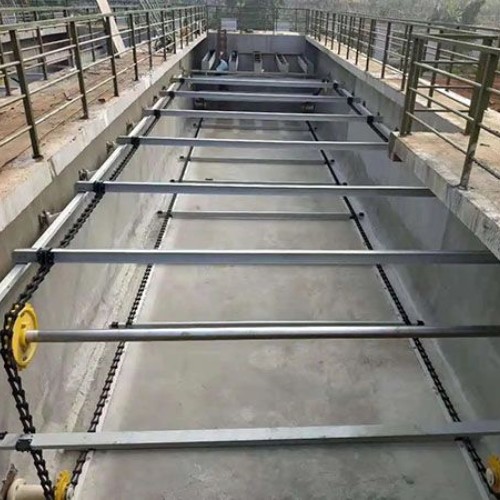
slag conveyor system
Slag Conveyor System
A slag conveyor system is designed to handle the byproduct material produced in various industrial processes, particularly in power plants, steel mills, and waste-to-energy facilities. Slag is a dense, abrasive, and high-temperature byproduct generated during the combustion of coal or biomass, or from metal smelting. A slag conveyor system is essential for efficiently transporting this material from the furnace, boiler, or processing area to storage or disposal points.
Types of Slag Conveyors
There are several types of conveyors used for slag handling, each suited for different applications and material characteristics.
- En-Masse (Chain) Conveyors:
- Ideal For: Handling large volumes of abrasive slag over horizontal or inclined distances.
- Features:
- Enclosed design to reduce dust and spillage.
- Robust chain and flight system for pushing dense, hot, or abrasive slag.
- Low-speed operation minimizes wear and tear.
- Applications: Primarily used in power plants, steel mills, and other industries where high-temperature or abrasive slag needs to be moved over long distances.
- Drag Chain Conveyors:
- Ideal For: Moving heavy slag and other abrasive materials over long distances, both horizontally and inclined.
- Features:
- Heavy-duty chains and flight systems capable of withstanding high loads.
- Operates at low speeds for gentle material handling.
- Applications: Used in steel mills and coal-fired power plants.
- Belt Conveyors:
- Ideal For: Handling slag that is not overly abrasive and where a continuous flow is required.
- Features:
- A continuous belt system that transports slag over various distances.
- Can be configured for both horizontal and inclined transport.
- Applications: Often used in industries where slag is collected after it has cooled, such as in some waste-to-energy plants.
- Screw Conveyors:
- Ideal For: Small-scale operations or where space is limited.
- Features:
- Screw augers rotate to move slag along a sealed tube, ideal for controlling material flow.
- Handles smaller volumes compared to other systems.
- Applications: Useful in confined spaces or smaller-scale industrial settings.
- Pneumatic Conveyors:
- Ideal For: Transporting slag over long distances with minimal space requirements.
- Features:
- Pneumatic systems use air pressure to transport materials.
- Enclosed system prevents dust and spillage.
- Applications: Typically used for light slag or other materials that are not excessively dense.
Key Features of Slag Conveyor Systems
- High Temperature Resistance:
- Designed to withstand the extreme temperatures of slag (up to 1000°C or more), ensuring the safe transport of hot materials without damage to the conveyor system.
- Durability:
- Slag is an abrasive material, so the conveyor system is built with wear-resistant components, such as hardened steel chains, heavy-duty flights, and durable trough linings.
- Enclosed Design:
- Prevents slag dust from escaping into the atmosphere, improving workplace safety and reducing environmental impact.
- Low Maintenance:
- Robust construction minimizes wear and tear, reducing the frequency and cost of maintenance.
- Energy Efficiency:
- Many slag conveyor systems, particularly chain conveyors, operate at low speeds, which reduces energy consumption compared to other handling methods.
Working Principle of Slag Conveyor Systems
- Slag Collection:
- Slag is discharged from the furnace, boiler, or processing area into a receiving hopper or directly onto the conveyor.
- Material Transport:
- The conveyor system uses a chain, belt, screw, or pneumatic system to move the slag along the desired path, either horizontally, inclined, or vertically.
- Slag Discharge:
- The material reaches the discharge point where it can be transferred to storage bins, cooling areas, or disposal sites.
- Cooling (Optional):
- In some cases, slag is cooled before being transported, either through water quenching or air cooling systems.
Advantages of Slag Conveyor Systems
- Efficient Handling:
- Designed for continuous and reliable transport of slag, reducing downtime and increasing operational efficiency.
- Safety:
- Enclosed systems reduce the risk of exposure to hazardous slag dust, protecting workers and the surrounding environment.
- Environmental Compliance:
- The enclosed design helps meet environmental standards by preventing slag dust from escaping into the atmosphere.
- Cost-Effective:
- Durable components reduce the need for frequent maintenance, saving on operational costs in the long run.
- Customizable:
- Slag conveyors can be tailored to handle specific types of slag (e.g., metal slag, bottom ash, fly ash) depending on the process and plant requirements.
Applications of Slag Conveyor Systems
- Steel Mills:
- Handling and transporting molten slag from the smelting process to storage or disposal points.
- Power Plants (Coal/Biomass):
- Moving bottom ash and fly ash produced from burning coal or biomass, including hot slag.
- Waste-to-Energy Plants:
- Transporting slag and ash generated from the combustion of waste materials.
- Cement Plants:
- Managing slag produced during cement production or from other industrial processes.
- Foundries:
- Transporting slag formed during metal casting processes.
Comparison with Other Conveyor Systems
| Feature | Slag Conveyor System | Belt Conveyor | Pneumatic Conveyor | Screw Conveyor |
|---|---|---|---|---|
| Temperature Resistance | High (can handle hot slag) | Low | Low | Moderate |
| Durability | Very high (abrasive-resistant) | Moderate | Low | Moderate |
| Energy Efficiency | Moderate | High | Low | Low |
| Maintenance Needs | Low | Moderate | High | Moderate |
| Dust Control | Excellent (fully enclosed) | Moderate | Excellent (enclosed) | Moderate |
Why Choose Slag Conveyor Systems?
- Durability and Reliability:
- Heavy-duty construction ensures the system can withstand the harsh conditions of slag handling, from extreme temperatures to abrasiveness.
- Safety and Environmental Control:
- Enclosed systems help control hazardous slag dust, ensuring compliance with safety and environmental regulations.
- Efficiency:
- Continuous, efficient transport reduces downtime and material handling costs.
- Flexibility:
- Available in various configurations (horizontal, inclined, vertical) to suit different plant layouts and space constraints.
If you’re looking to integrate a slag conveyor system into your plant or need to customize one for your specific process, I can assist with design, capacity calculations, and optimization to fit your requirements. Let me know how I can help!
Process
The high-temperature ash discharged from the furnace is firstly broken into small pieces by the roller-type slag breaker to facilitate cooling and transportation.
After the crushing of the ash and slag into the water-cooled screw slag extractor and between the screw blade and the outer cylinder cooling heat transfer back out.
If necessary, air lock (star ash discharge valve) can be provided at the outlet of the slag cooler.
Ash inlet temperature is less than 900 ℃, clinker size less than 100 mm, the transmission distance is 4 to 7 m, the level of the installation
Advantages
1. Facilitate the comprehensive utilization of slag.
2. Reasonable structure design, reliable operation, safe operation and good sealing performance.
3. Good load adaptability and remote control
Scraper slag remover
1. The cast stone slab is placed at the bottom of the base groove, which can effectively improve the wear resistance of the material and prolong the service life of the base groove.
2. The scraper material of the double-chain scraper is cast steel, the transmission chain is 25MNV high-strength material for mining, and the structure is double-row ring welding. In the process of transporting ash, the tightness of the chain can be automatically adjusted by the device at the front of the device.
3. The double-chain slag removing machine can reduce the labor intensity of the furnace workers, improve the working conditions of the boiler room, and ensure the boiler production efficiency to the greatest extent.
4. Compared with other closed type slag removing machines, the double-chain type is an open design, which can ensure that all ash can be discharged to the outside of the boiler.
5. The scraper support is a cast stone rail support method, which avoids various problems of supporting by the rollers, and can effectively reduce the maintenance cost of the equipment.
6. It is suitable for the slag removal of single-drum boilers with all slag outlets arranged at the rear and lower parts of the boiler.
7. The chain is automatically tensioned by manual or machine. The double overload protection system of the motor can ensure that the chain is not dragged, not stacked, and the ash is transported smoothly, meeting the requirements of industrial boilers and heating boilers.
Boiler removal scraper type
TYPE (Length <8M Slag 0.6-2.3T/H)
For boiler 2ton/h~25ton/h







